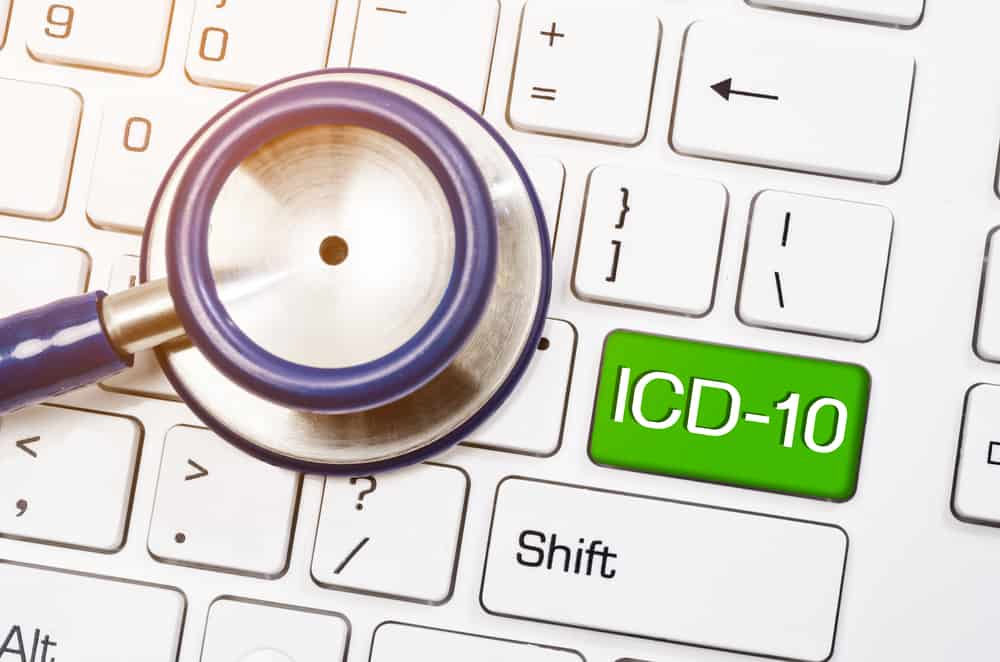It’s hard to believe summer is almost over. Many students are back in school, the football season has kicked off, and temperatures in most of the country are slowly getting cooler.
For healthcare providers and payers, the beginning of fall means it’s only a few weeks until October 1 when the fiscal year (FY) 2022 ICD-10-CM Official Guidelines for Coding and Reporting go into effect. Released on July 12, somewhat earlier than in years past, these codes are to be utilized for discharges and patient encounters occurring from October 1, 2021 through September 30, 2022.
Although the FY 2022 codes mostly only include clarifications and other small changes, the newest update from the Centers for Medicare & Medicaid Services includes 159 additions, 25 deletions and 27 revisions. It’s the second set of code updates this year after the Centers for Disease Control and Prevention’s National Center for Health Statistics (NCHS) implemented 6 new diagnosis codes in response to the COVID-19 pandemic, all of which became effective on January 1, 2021.
Let’s take a look at some of these critical updates.
Clinical documentation, SDOH, cannabis, and more
ICD-10-CM is the standard transaction code set for diagnostic purposes to track:
- healthcare statistics/disease burden
- quality outcomes
- mortality statistics
- billing

That means it’s crucial for physicians, coders, health information managers, nurses, and other healthcare professionals to recognize codes for conditions that have been updated or revised. It’s also necessary that they understand the impact of the new and revised codes. We’ve compiled an overview of some of the changes in the 2022 ICD-10-CM code set, including those designed to enable coders to capture codes based on documentation from clinicians other than the patient’s provider.
For example, Section I.B.13 (laterality) instructs that code assignment for laterality may be based on medical record documentation from other clinicians if it is not documented by the patient’s provider. Section I.B.14 allows coders to use other clinicians’ documentation to code:
- body mass index (BMI)
- depth of non-pressure chronic ulcers
- pressure ulcer stage
- coma scale
- NIH stroke scale
- social determinants of health (SDOH)
- laterality and blood alcohol level (BAC)
It’s important to note they can code these as long as the provider documents the associated diagnosis. It cannot be based on documentation from other clinicians.
Another code in Section I, I.C.21.c.17, gives coders the ability to capture SDOH codes based on documentation from any clinician involved in the patient’s care. This can include nurses, social workers, case managers, and others. Code assignments can also be based on self-reported documentation from a patient, but requires a clinician to approve and include it in the patient’s medical record.

One category consisting of multiple changes is cannabis use codes. This update is most likely due to more states legalizing it for medicinal as well as recreational use. There are 36 new codes that “classify poisoning, adverse effect, and underdosing of cannabis and synthetic cannabinoids.”
Other new ICD-10-CM codes for 2022 include:
- R05.1 for acute cough
- R05.2 for subacute cough
- R05.3 for chronic cough
- Z59.00 for homelessness unspecified
- Z59.01 for sheltered homelessness
- Z59.02 for unsheltered homelessness
- Z59.41 for food insecurity
- Z59.48 for other specified lack of adequate food
- Z58.6 for inadequate drinking water
A few of the new codes for pediatric care consist of:
- G04.82 for acute flaccid myelitis
- R79.83 for abnormal findings of blood amino acid level
- G44.86 for cervicogenic headache
- F32.A1 for depression, unspecified
A focus on the IPPS Final Rule
On August 2, CMS released the 2,295-page hospital Inpatient Prospective Payment System (IPPS) Final Rule, which has data integral for the work of health information management, coding, and clinical documentation integrity (CDI) specialists.

Also going into effect on October 1, 2021 will be an increase in hospital reimbursement rates by 2.5% and will include a $2.3 billion augmentation in payments to hospitals diagnosing and treat COVID-19. A couple key implications of the IPPS final rule include:
- MS-DRG Relative Weights (RWs): For FY 2022, CMS will not implement the market-based MS-DRG relative weight methodology for calculating the MS-DRG relative weights that was to be effective in FY 2024. Instead, the agency will continue with the cost-based structure.
- Revisions/Reassignments to MS-DRGs: CMS will delay the application of the non-CC subgroup criteria to existing MS-DRGs, with a three-way severity level split until FY 2023 or later. For FY 2022, the agency will maintain the current structure of the 32 MS-DRGs that currently have a three-way severity level split.
Recognizing the need for coding and CDI experts
Learning and putting into practice these new codes is understandably a complex process – even for the most experienced professionals. Incorrectly incorporating them could severely affect a provider’s revenue cycle through an increase in denied claims and payments.
Using the services of consultants who have expertise in transitioning with ICD-10 updates enables providers and payers to ensure their revenue cycle is strong. Relying on those experts also allows providers to focus on their core objective: providing quality patient care.
At Harmony Healthcare, our team of highly trained consultants is primed to ensure ICD-10 compliance and reimbursement accuracy to boost your organization’s revenue.
If you’re to grow within the coding, clinical documentation, or revenue cycle professions, our team of career advisors can help. And thanks to a varied and dynamic client base, you’ll have the opportunity to work in an environment that best suits your lifestyle.





